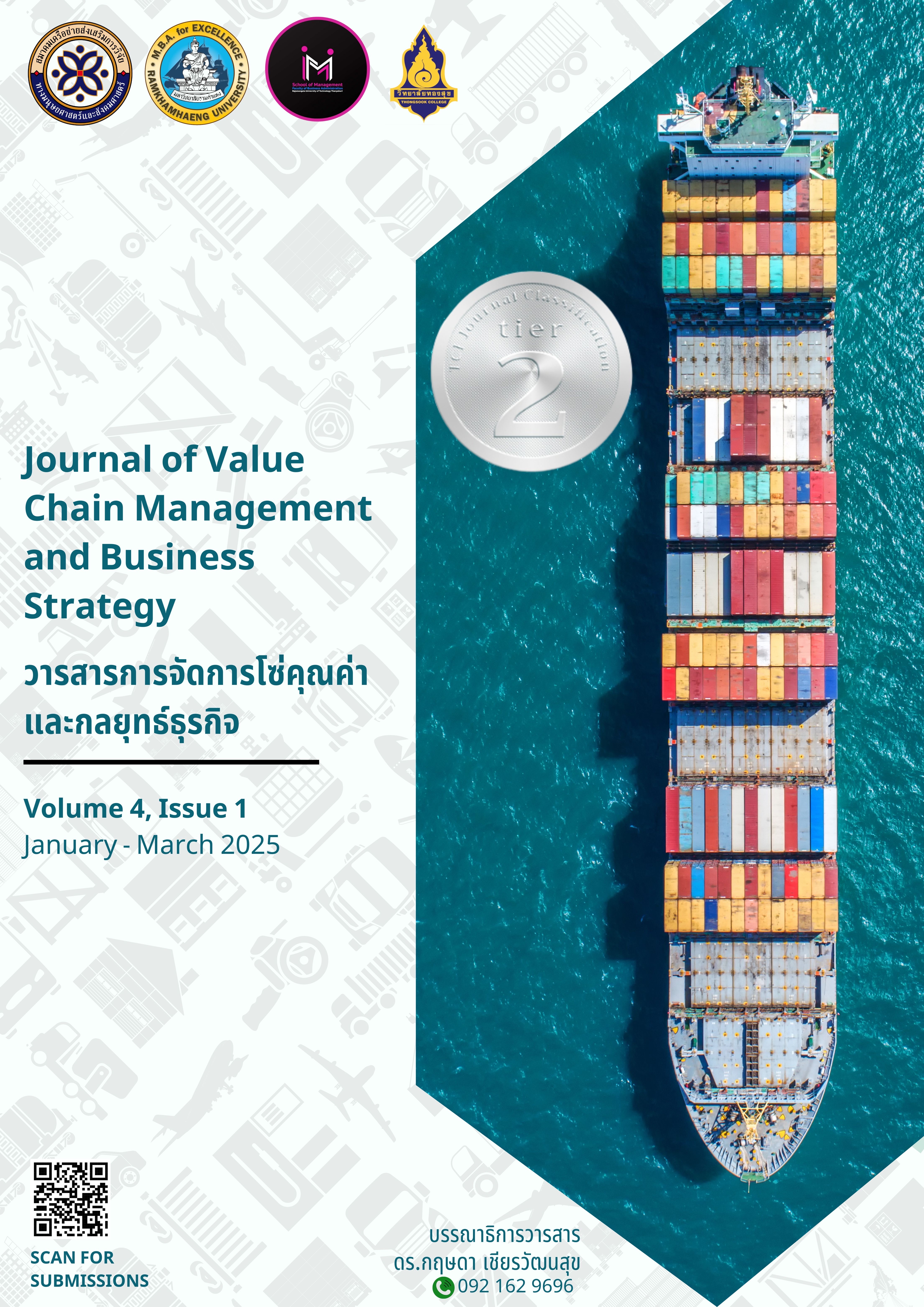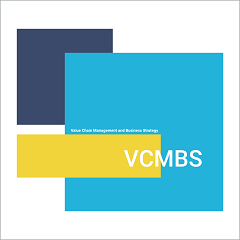EFFECTS OF MOTIVATIONAL FACTORS, HYGIENE FACTORS AND TRANSFORMATIONAL LEADERSHIP ON THE PERFORMANCE OF GENERATION Y EMPLOYEES IN A HIGH-TECH COMPANY: A CASE STUDY OF XIAOMI GROUP
คำสำคัญ:
Motivation Factors, Hygiene Factors, Transformational Leadership, Employee Performanceบทคัดย่อ
The aim of this study is to investigate the influence of motivational factors, hygiene factors and transformational leadership on the performance of Generation Y employees at the Xiaomi Group. The population consisted of Xiaomi Group employees with a total sample size of 360 participants. A questionnaire was used as the primary instrument for data collection. Hypothesis testing was conducted using Partial Least Squares Structural Equation Modeling (PLS-SEM), with the statistical significance level set at .05.
The results showed that motivational factors, hygiene factors and transformational leadership have a statistically significant impact on the performance of Generation Y employees at Xiaomi Group, with a significance level of .001. The structural model showed a predictive power of 54.9%. Based on these results, it is recommended that Xiaomi Group improve promotion opportunities, autonomy, and recognition programs to increase employee motivation. In addition, improvements in organizational policies, compensation and managerial support are essential for maintaining job satisfaction. Strengthening strategic communication, encouraging innovation and fostering mentorship through effective leadership will further optimize employee performance and support the long-term success of the company.
เอกสารอ้างอิง
Aguenza, B. B., & Som, A. P. M. (2018). Motivational factors of employee retention and engagement in organizations. International Journal of Human Resource Studies, 8(3), 207-217.
Al Mehrzi, N., & Singh, S. K. (2016). Competing through employee engagement: A proposed framework. International Journal of Productivity and Performance Management, 65(6), 831-843. https://doi.org/10.1108/IJPPM-02-2016-0037
Amabile, T. M., & Kramer, S. J. (2011). The progress principle: Using small wins to ignite joy, engagement, and creativity at work. Harvard Business Review Press.
Amabile, T. M., & Pratt, M. G. (2016). The dynamic componential model of creativity and innovation in organizations: Making progress, making meaning. Research in Organizational Behavior, 36, 157–183. https://doi.org/10.1016/j.riob.2016.10.001
Bass, B. M. (1985). Leadership and performance beyond expectations. Free Press.
Burns, J. M. (1978). Leadership. Harper & Row.
Campbell, W. K., Miller, J. D., & Twenge, J. M. (2021). The rise of Generation Y in the workforce: A new challenge for organizations. Journal of Business Psychology, 36(1), 45-60.
Chan, S. H. J., & Mak, W. M. (2019). Transformational leadership, pride in being a follower of the leader and organizational commitment. Leadership & Organization Development Journal, 40(1), 55-68. https://doi.org/10.1108/LODJ-12-09-0076
Charoensukmongkol, P., & Puyod, J. V. (2021). Influence of transformational leadership on employee job satisfaction, employee engagement, and organizational citizenship behavior: A case study of a multinational company in the Philippines. Journal of Human Behavior in the Social Environment, 31(4), 570-590.
Chou, S. Y. (2018). Millennials in the workplace: A conceptual analysis of generational differences in leadership approaches and workplace expectations. Journal of Organizational Behavior, 39(1), 1-15. https://doi.org/10.5296/ijhrs.v2i2.1568
Dechawatanapaisal, D. (2018). Employee retention: The impact of self-efficacy and transformational leadership. Journal of Workplace Learning, 30(5), 321-340.
Deci, E. L., & Ryan, R. M. (2000). The "what" and "why" of goal pursuits: Human needs and the self-determination of behavior. Psychological Inquiry, 11(4), 227-268. https://doi.org/10.1207/S15327965PLI1104_01
Deci, E. L., & Ryan, R. M. (2017). Optimizing motivation and well-being in organizations. Annual Review of Organizational Psychology and Organizational Behavior, 4(1), 19–43.
Eisenberger, R., & Stinglhamber, F. (2011). Perceived organizational support: Fostering enthusiastic and productive employees. American Psychological Association.
Ertas, N. (2015). Millennials and motivation: A generational analysis of public service motivation. Public Administration Review, 75(3), 327-335.
Gagné, M., & Deci, E. L. (2018). Self-determination theory applied to work motivation. Journal of Organizational Behavior, 39(3), 333–348. https://doi.org/10.1093/OBO/9780199846740-0182
Gallup. (2020). State of the global workplace. https://www.gallup.com
Gilley, A., Gilley, J. W., & McMillan, H. S. (2015). The manager as coach: The impact on employee motivation, performance, and productivity. Performance Improvement Quarterly, 28(1), 6-25.
Gupta, M., & George, J. F. (2016). Toward the development of a big data analytics capability. Information & Management, 53(8), 1049–1064. https://doi.org/10.1016/j.im.2016.07.004
Gursoy, D., Chi, C. G. Q., & Karadag, E. (2013). Generational differences in work values and attitudes among frontline and service contact employees. International Journal of Hospitality Management, 32, 40-48. https://doi.org/10.1016/j.ijhm.2012.04.002
Gursoy, D., Maier, T. A., & Chi, C. G. (2008). Generational differences: An examination of work values and generational gaps in the hospitality workforce. International Journal of Hospitality Management, 27(3), 448-458. https://doi.org/10.1016/j.ijhm.2007.11.002
Hair, J. F., Black, W. C., Babin, B. J., & Anderson, R. E. (2010). Multivariate data analysis (7th ed). Pearson.
Henseler, J., Hubona, G., & Ray, P. A. (2016). Using PLS path modeling in new technology research: updated guidelines. Industrial management & data systems, 116(1), 2-20. https://doi.org/10.1108/IMDS-09-2015-0382
Herzberg, F. (1966). Work and the nature of man. World Publishing Company.
Herzberg, F. (2015). Motivation-hygiene theory. In Organizational Behavior 1 (pp. 61-74). Routledge.
Hom, P. W., Lee, T. W., Shaw, J. D., & Hausknecht, J. P. (2017). One hundred years of employee turnover theory and research. Journal of Applied Psychology, 102(3), 530–545. https://doi.org/10.1037/apl0000103
Huang, J., Ma, J., & Meng, L. (2019). Understanding employee performance: A meta-analysis of the predictors of workplace effectiveness. International Journal of Business Performance Management, 25(1), 56–78.
Kossivi, B., Xu, M., & Kalgora, B. (2016). Study on determining factors of employee retention. Open Journal of Social Sciences, 4(5), 261-268.
Mansor, Z. D., Mun, C. P., Farhana, B. S. N., & Tarmizi, W. A. N. W. M. (2017). Influence of transformational leadership style on employee engagement among Gen Y. International Journal of Social, Behavioral, Educational, Economic, Business and Industrial Engineering, 11(1), 161-165.
Ng, E. S., Lyons, S. T., & Schweitzer, L. (2018). Millennials in the workforce: What they want, how they want it, and why it matters. Business Horizons, 61(1), 1-11. https://doi.org/10.4337/9780857933010
Ng, E. S., Schweitzer, L., & Lyons, S. T. (2010). New generation, great expectations: A field study of the millennial generation. Journal of business and psychology, 25, 281-292. https://doi.org/10.1007/s10869-010-9159-4
Northouse, P. G. (2021). Leadership: Theory and practice (9th ed.). Sage Publications.
O'Bannon, G. (2021). Managing Millennials: Embracing generational differences in the workplace. The Journal of Business Diversity, 21(1), 23-35.
Xiaomi Annual Report. (2023). Xiaomi Corporation Annual Report 2023. https://www.mi.com
Yukl, G. (2013). Leadership in organizations (8th ed.). Pearson.
ดาวน์โหลด
เผยแพร่แล้ว
รูปแบบการอ้างอิง
ฉบับ
ประเภทบทความ
สัญญาอนุญาต
ลิขสิทธิ์ (c) 2025 วารสารการจัดการโซ่คุณค่าและกลยุทธ์ธุรกิจ

อนุญาตภายใต้เงื่อนไข Creative Commons Attribution-NonCommercial-NoDerivatives 4.0 International License.




